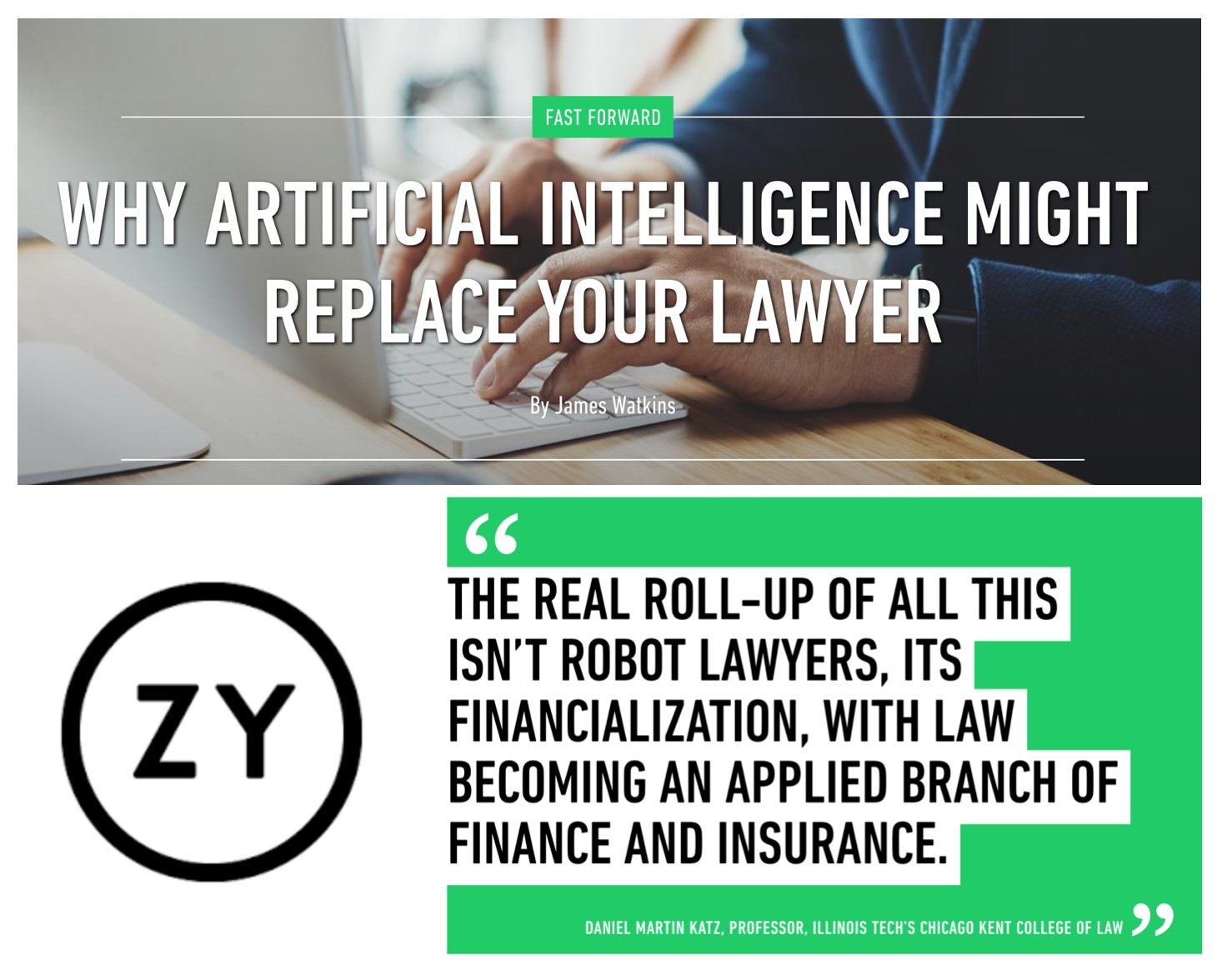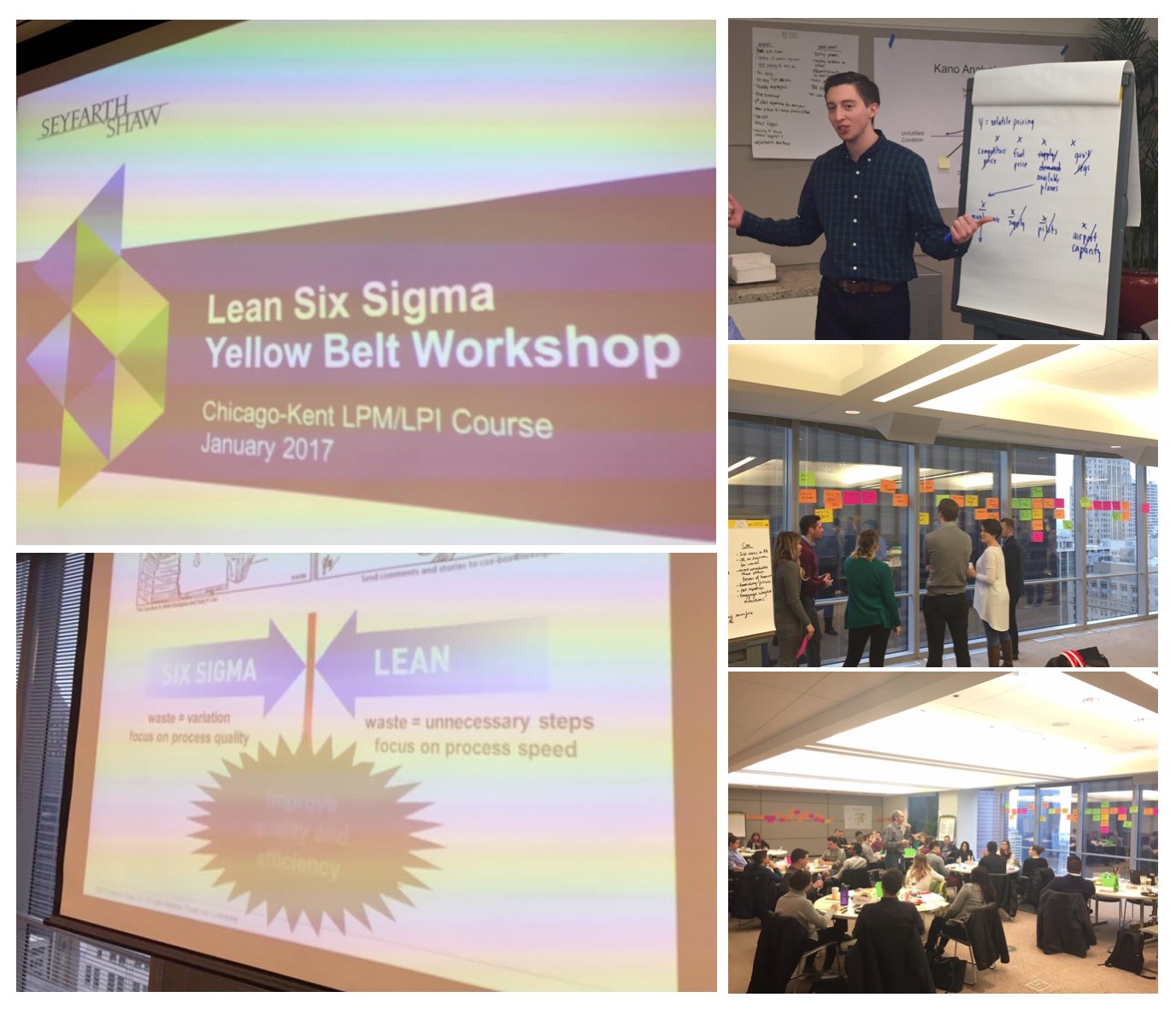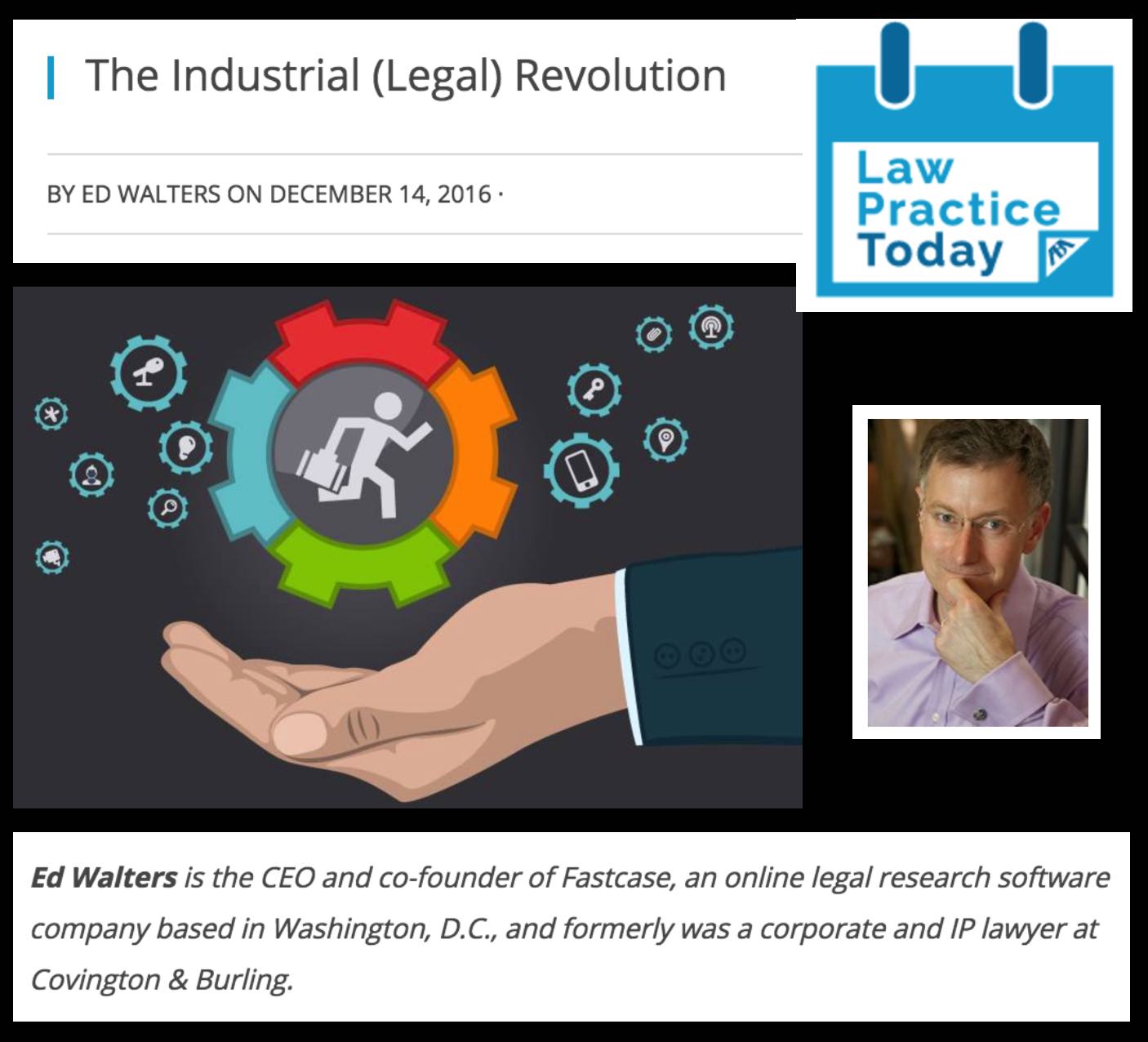Tag: legal tech
Why Artificial Intelligence Might Replace Your Lawyer (via OYZ)
 “It’s the alignment of tech and economics that is allowing all this stuff to start moving … The real roll-up of all this isn’t robot lawyers, its financialization, with law becoming an applied branch of finance and insurance” says Daniel Martin Katz, professor at Illinois Tech’s Chicago Kent College of Law.
“It’s the alignment of tech and economics that is allowing all this stuff to start moving … The real roll-up of all this isn’t robot lawyers, its financialization, with law becoming an applied branch of finance and insurance” says Daniel Martin Katz, professor at Illinois Tech’s Chicago Kent College of Law.
Scenes from #LegalTech 2017 / Legal Week

Yesterday was the final day of LegalTech NYC — the largest technology show in the Legal Industry. LegalTech NYC typically attracts 12,000+ attendees over the 3 days of the show.
I spoke on a panel on Thursday entitled – The Future of e-Discovery Law, Business, and Practice with the following panelists —
David Horrigan, kCura
Monica Bay, CodeX: The Stanford Center for Legal Informatics
Dennis Garcia, Assistant General Counsel, Microsoft
Daniel Katz, Illinois Tech – Chicago Kent College of Law + LexPredict
James Francis IV (S.D.N.Y), United States Magistrate Judge
Andrew Jimenez, CEO, Fronteo USA
Saturday Kickoff Workshop for Legal Process Improvement / Legal Project Management Course with @SeyfarthShawLLP @ChicagoKentLaw

Yesterday was our Saturday morning kickoff workshop for our semester long Legal Process Improvement / Legal Project Management Course here at Illinois Tech – Chicago Kent College of Law. Students will have the opportunity to earn a Yellow Belt in Lean Six Sigma for Legal as part of the course.
I am exited to collaborate with Seyfarth Shaw LLP + Seyfarth Lean Consulting team – Kim R. Craig, Larissa Kruzel, Kyle Hoover, etc. on this brand new course. #leanlaw #legaltech #legalservicedelivery #lawyersassystematicproblemsolvers
Program Chair and Speaker at the Plenary Presidential Summit @ New York State Bar Association Annual Meeting – Artificial Intelligence and its Impact on the Legal Profession –

I am pleased to serve as a Program Chair and Speaker at the Plenary Presidential Summit @ New York State Bar Association Annual Meeting. Today’s topic will be Artificial Intelligence and its Impact on the Legal Profession. Joining me on the panel are the following panelists covering the following topics:
What is Artificial Intelligence? What is Machine Learning?
Dera J. Nevin, eDiscovery Counsel, Proskauer
What are Some Applications of Artificial Intelligence, Machine Learning, and Predictive Analytics in Law?
Andrew M.J. Arruda, CEO & Co-Founder, Ross Intelligence
Daniel Martin Katz, J.D., Ph.D., Associate Professor of Law, Illinois Tech – Chicago Kent Law
What are the Labor Market Impacts? More Jobs, Less Jobs, Different Forms of Legal Jobs and Legal Work?
Noah Waisberg, J.D., Co-founder & CEO, Kira Systems
Co-Teaching Legal Process Improvement + Legal Project Management Class : Illinois Tech – Chicago Kent College of Law / Seyfarth Lean

This week we kicked off the semester for our @ChicagoKentLaw / @SeyfarthShawLLP Legal Process Improvement / Legal Project Management Class. This 15 week two credit class will be among the very first of its kind to be taught at a law school.
I am very honored to have the opportunity to work with the Seyfarth Lean Consulting team – Kim R. Craig, Larissa Kruzel, Kyle Hoover on this course! #leanlaw #legaltech #sixsigmaforlawyers #LPM #legalprocessimprovement #legalengineering
A General Approach for Predicting the Behavior of the Supreme Court of the United States (Paper Version 2.01) (Katz, Bommarito & Blackman)

Long time coming for us but here is Version 2.01 of our #SCOTUS Paper …
We have added three times the number years to the prediction model and now predict out-of-sample nearly two centuries of historical decisions (1816-2015). Then, we compare our results to three separate null models (including one which leverages in-sample information).
Here is the abstract: Building on developments in machine learning and prior work in the science of judicial prediction, we construct a model designed to predict the behavior of the Supreme Court of the United States in a generalized, out-of-sample context. Our model leverages the random forest method together with unique feature engineering to predict nearly two centuries of historical decisions (1816-2015). Using only data available prior to decision, our model outperforms null (baseline) models at both the justice and case level under both parametric and non-parametric tests. Over nearly two centuries, we achieve 70.2% accuracy at the case outcome level and 71.9% at the justice vote level. More recently, over the past century, we outperform an in-sample optimized null model by nearly 5%. Our performance is consistent with, and improves on the general level of prediction demonstrated by prior work; however, our model is distinctive because it can be applied out-of-sample to the entire past and future of the Court, not a single term. Our results represent an advance for the science of quantitative legal prediction and portend a range of other potential applications.
The Future of Law + Legal Technology @ Aviva Stadium – Dublin, Ireland

Enjoyed delivering the Keynote Address at the #FutureOfLaw Conference here at Aviva Stadium in Dublin, Ireland.
Thanks to Leman Solicitors and all of the sponsors for this wonderful event!
Daniel Katz Launches Fin [Legal] Tech (via Above The Law) #FinLegalTech

For more information on Fin (Legal) Tech — see here!




